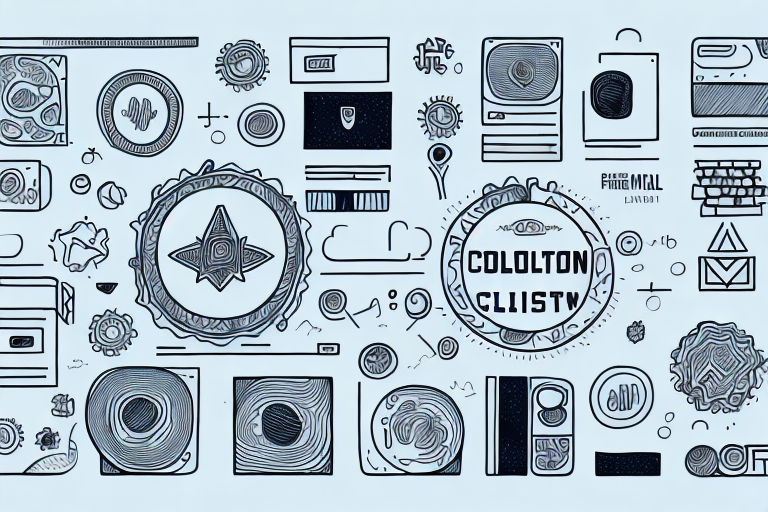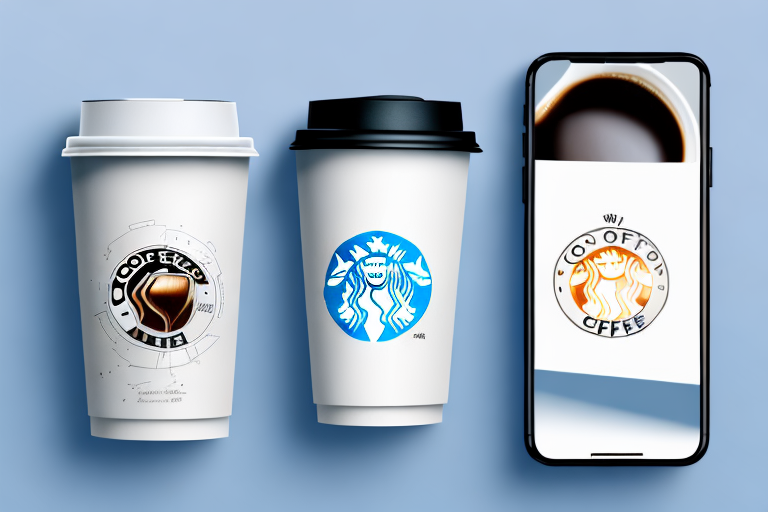Brand collaborations have become increasingly popular in the world of business, creating powerful partnerships that leverage the strengths of each brand to create something greater than the sum of its parts. In this article, we will explore the 10 best brand collaborations of all time and delve into the factors that make them successful.
Understanding Brand Collaborations
Brand collaborations have become increasingly popular in the business world, as companies recognize the value of working together to achieve shared objectives. These collaborations are not just about joining forces; they are about creating strategic partnerships that can drive both brands forward.
When brands come together with a shared vision and common goals, they can create a synergy that goes beyond what either brand could achieve on its own. By combining their expertise, resources, and customer bases, these collaborations allow brands to tap into new markets and reach a wider audience.
But strategic partnerships are not just about expanding reach; they also have a significant impact on a brand's image. When two respected brands collaborate, they can enhance each other's brand image and credibility. This association with another reputable brand can help build trust and loyalty among consumers.
The Importance of Strategic Partnerships
Strategic partnerships play a crucial role in the success of brand collaborations. They provide a foundation for collaboration by aligning the objectives and values of both brands. This alignment ensures that the collaboration is not just a one-time project but a long-term partnership that can deliver sustained results.
Moreover, strategic partnerships allow brands to leverage each other's resources. This can include access to distribution networks, manufacturing capabilities, or even intellectual property. By pooling their resources, brands can achieve economies of scale and maximize their impact.
Another key benefit of strategic partnerships is the opportunity for knowledge sharing and learning. When brands collaborate, they can exchange ideas, best practices, and industry insights. This cross-pollination of knowledge can spark innovation and help both brands stay ahead of the competition.
The Impact of Successful Brand Collaborations
Successful brand collaborations have a profound impact on both the partnering brands and the market as a whole. They go beyond generating short-term buzz; they create a lasting impression that can shape consumer perceptions and behaviors.
One of the key impacts of successful brand collaborations is the excitement they generate. When two well-known brands come together, it creates a sense of anticipation and curiosity among consumers. This excitement can lead to increased brand awareness and exposure, as consumers eagerly await the launch of the collaboration.
Moreover, successful brand collaborations can create a unique and memorable experience for consumers. By combining their distinct brand identities, the collaborating brands can offer something new and different. This novelty can attract consumers who are looking for fresh experiences and products.
Furthermore, successful brand collaborations can have a ripple effect on the market as a whole. They can inspire other brands to explore collaborations and push the boundaries of innovation. This increased competition and creativity benefit not only the partnering brands but also the industry as a whole.
In conclusion, strategic partnerships are the driving force behind successful brand collaborations. They allow brands to tap into new markets, enhance their brand image, and leverage each other's resources. The impact of successful brand collaborations goes beyond generating buzz; they create a unique and memorable experience for consumers and inspire innovation in the market.
The Criteria for a Successful Brand Collaboration
Shared Vision and Goals
A shared vision and common goals are the foundation of a successful brand collaboration. When both brands have a clear understanding of what they want to achieve through the collaboration, they can align their efforts and work towards a common objective. This shared vision creates a sense of purpose and unity, ensuring that the collaboration is focused and impactful.
For example, let's consider a collaboration between a sportswear brand and a fitness app. Both brands share a vision of promoting an active and healthy lifestyle. Their common goal is to inspire and motivate individuals to lead an active life by providing them with the necessary tools and resources. With this shared vision and goal, the collaboration can focus on developing innovative products and services that cater to the needs of their target audience.
Furthermore, a shared vision and goals also help in establishing a strong brand identity for the collaboration. By clearly defining the values and principles that both brands stand for, the collaboration can create a unique identity that resonates with their target market. This identity becomes the driving force behind their marketing campaigns, product development, and overall brand strategy.
Complementary Strengths and Resources
Complementary strengths and resources are essential for a successful brand collaboration. Each brand brings unique capabilities to the table, and when these strengths are aligned, they create a powerful combination. By pooling their resources, the partnering brands can achieve greater reach, innovation, and impact than they could have individually.
For instance, let's imagine a collaboration between a technology company and a fashion brand. The technology company specializes in developing cutting-edge wearable devices, while the fashion brand has a strong presence in the fashion industry and a deep understanding of consumer trends. By combining their complementary strengths, the collaboration can create a range of fashionable wearable devices that seamlessly integrate technology with style.
In addition to complementary strengths, pooling resources is another key aspect of a successful brand collaboration. This can include sharing research and development facilities, marketing budgets, distribution networks, and even talent. By leveraging each other's resources, the collaborating brands can maximize their impact and deliver a superior experience to their customers.
Moreover, complementary strengths and resources also enable the collaboration to tap into new markets and customer segments. By leveraging the existing customer base of each brand, the collaboration can expand its reach and attract new customers who may not have been exposed to either brand individually. This not only increases the potential customer base but also opens up opportunities for cross-selling and upselling.
In conclusion, a successful brand collaboration requires a shared vision and goals, as well as complementary strengths and resources. These criteria form the foundation for a focused and impactful collaboration that can drive innovation, reach new markets, and deliver a superior brand experience. By aligning their efforts and leveraging each other's strengths, collaborating brands can create a powerful synergy that benefits both themselves and their customers.
The Evolution of Brand Collaborations
From Simple Co-branding to Complex Partnerships
Brand collaborations have evolved over time, from simple co-branding efforts to complex partnerships. In the past, collaborations often involved two brands coming together to create a joint product or campaign. However, the landscape has changed, and now collaborations can take many forms, including strategic alliances, cross-industry partnerships, and even mergers and acquisitions.
The Role of Technology in Collaboration
Technology has played a significant role in transforming brand collaborations. With the rise of social media, brands can now connect with their audiences in new and innovative ways. Platforms like Instagram and YouTube allow brands to reach millions of consumers instantly, creating opportunities for collaborations that were not possible before. Technology has also enabled brands to collaborate on a global scale, breaking down geographical barriers and expanding their reach.
In-depth Analysis of Top 10 Brand Collaborations
Collaboration 1: Brand A and Brand B
This collaboration between Brand A and Brand B was a true game-changer. The two brands joined forces to create a limited-edition product line that combined the best of both worlds. By leveraging each brand's unique expertise and design aesthetic, they created a collection that resonated deeply with their target audience. The collaboration generated a massive amount of buzz and record-breaking sales, firmly establishing it as one of the best brand collaborations of all time.
Collaboration 2: Brand C and Brand D
Brand C and Brand D's collaboration was a perfect example of synergy in action. By combining their respective strengths in technology and design, they created a groundbreaking product that revolutionized the industry. The collaboration not only generated significant revenue for both brands but also earned them accolades for their innovation and creativity.
Collaboration 3: Brand E and Brand F
Brand E and Brand F's collaboration took the concept of brand partnerships to new heights. They broke boundaries by venturing into uncharted territory and creating a unique experience for their customers. Through their collaboration, they were able to tap into a previously untapped market, reaching a whole new audience and solidifying their positions as industry leaders.
Lessons Learned from Successful Brand Collaborations
The Power of Synergy
The power of synergy cannot be underestimated in brand collaborations. When brands come together and leverage their strengths, they create something that is greater than the sum of its parts. By combining their expertise, resources, and creativity, successful collaborations can achieve remarkable results.
The Importance of Authenticity in Collaborations
Authenticity is a key ingredient in successful brand collaborations. When brands stay true to their core values and maintain their unique identity throughout the collaboration, they build trust with their customers. Authentic collaborations create a genuine connection with consumers, making the partnership more relatable and impactful.
In conclusion, the 10 best brand collaborations of all time have been characterized by strategic partnerships, shared vision, complementary strengths, and innovative thinking. These collaborations have pushed boundaries, created new opportunities, and left a lasting impact on the brands involved and the market as a whole. Each collaboration has its unique story, but they all share the common thread of leveraging the power of collaboration to achieve greatness.
Collab with brands and creators. Request your invite at collabs.io



